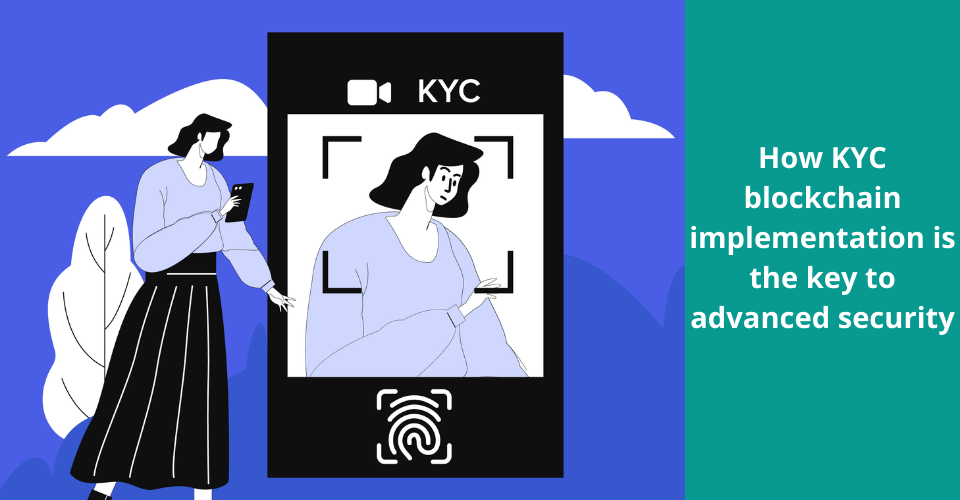The KYC process is essential to anti-money laundering measures taken by financial institutions. Today, businesses are trying and transforming this long process. How? The process of utilizing blockchain for KYC takes place across several stages in the distributed ledger (DLT), allowing for immutability. Without wasting any further time, we will help you better understand how KYC blockchain implementation is the key to advanced security.
What is KYC blockchain implementation?

KYC is short for Know Your Customer. In essence, KYC blockchain implementation allows for immutability plus transparency, ultimately letting financial institutions prove the reliability of data residing in the distributed ledger platform. Thanks to the decentralized KYC process, it is smoother to get safe and fast entry to updated user data.
How KYC blockchain implementation is the key to advanced security

1: The user created a profile on the KYC distributed ledger system
Financial institutions have been adopting a KYC system based on blockchain technology that serves as a setup done only once by the user. After uploaded, the data are available for access by the Financial Institution 1 for validation purposes. As for keeping the data of users, there are several options, for example, the distributed ledger platform or a centralized encryption server.
2: User makes transactions with Financial Institution 1
When making a transaction with Financial institution 1, users provide it with the access right to their profile. After that, Financial institution 1 validates the KYC data and stores the data copy on its server. Then, it posts a ‘Hash Function’ to the distributed ledger platform. Lastly, Financial institution 1 moves KYC online copies to the user profile set with a Hash Function that corresponds to the Hash Function posted on the distributed ledger platform.
Now, should the KYC data be changed, the KYC data’s Hash Function will not be consistent with the one uploaded on the distributed ledger platform. It will notify the blockchain’s other banking institutions about the alteration. KYC blockchain implementation is seamless that way.
3: User makes a transaction with Financial Institution 2
When Financial Institution 2 requires the user to implement KYC, the user gives it the access right to their profile. After that, Financial institution 1 examines the KYC data (in addition to the Hash Function embedded) with the Hash function posted by Financial Institution 1. If both are consistent, Financial Institution 2 would understand that the KYC is the one Financial Institution 1 got. If the two Hash Functions fail to be consistent, Financial Institution 2 would need to verify KYC documents manually. Now you know how KYC blockchain implementation is the key to advanced security, don’t you?
Yet, what is up if the user gets a new passport or something and this causes changes to their original document in distributed ledger user profile? Then, financial institutions use smart contracts to update their systems automatically.
In conclusion, hopefully, you better understand how KYC blockchain implementation is the key to advanced security after reading this post. For more help and guides, contact SmartOCS.
Contact us if you have any queries about Blockchain development services, dApps development, NFT marketplace development, Crypto wallet development, Smart contracts development.

